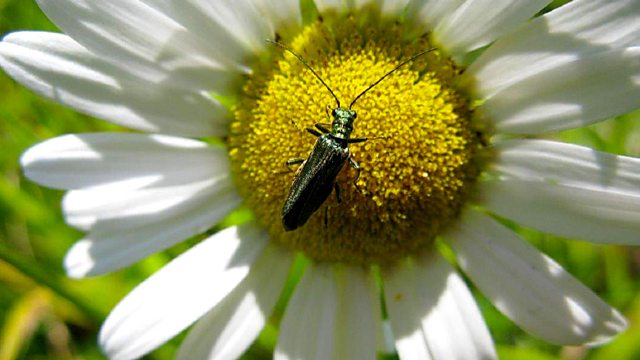The Yuan Yang
Chris Sperring goes to the River Dart in Devon to look for a bird which was only accepted onto the British species list in 1971, the mandarin duck.
In traditional Chinese culture the mandarin duck is believed to bring lifelong fidelity to couples and frequently used as symbols for wedding presents or in Chinese art. Formerly abundant in their native Far East, numbers of mandarin ducks have declined due to habitat destruction (mainly logging) and over-hunting. It is difficult to estimate exactly how many remain in the world, but estimates are around 60,000 to 80,000 birds, which includes a free living introduced and naturalised population of 7,000 birds in the UK.
For this Living World, presenter Chris Sperring travels to the river Dart in Devon where starting underneath the busy A38 trunk road he meets up with naturalist John Walters who has been studying a winter roost of mandarin ducks here. In mid-winter up to 100 birds can roost here but in early spring they are beginning to pair up and disperse along the river Dart. Leaving this noisy suburban area, Chris and John then head off up the river to search for pairs of these wonderful tree ducks in the Devonian landscape.
The male mandarin is possibly one of the most colourful species of waterfowl and an unmistakable bird with its plumage covering most colours in an artist's palate. The male has a red bill, large white crescent above the eye, a reddish face and "whiskers". In full breeding plumage the most striking of all these feathers are two vibrant orange "sails" at the back which signal his presence to females and other males. Despite all these vibrant colours they are a surprisingly difficult bird to find in the wild as they are well camouflaged against the shrubs and habitat they move into to breed. Unlike most British ducks, these 'tree ducks' nest in tree holes, the emerging day-old ducklings have a perilous fall to the ground below.
Chris discovers in the programme that Britain's wild Mandarin population could probably be more numerous than that of the duck's true home, China and the Russian Far East, where it is now endangered. But how did this exotic alien came to be in Britain in the first place and how it is now on the British Bird List? First recorded in the 17th Century where they were brought to Britain as ornamental waterfowl on stately homes, they eventually escaped; although it was not until the 1920's that they became a truly wild living species, although as Chris discovers, intervention from humans plays a vital role in maintaining this exotic species in the British countryside.
Last on
Broadcast
- Sun 19 May 2013 06:35麻豆官网首页入口 Radio 4



